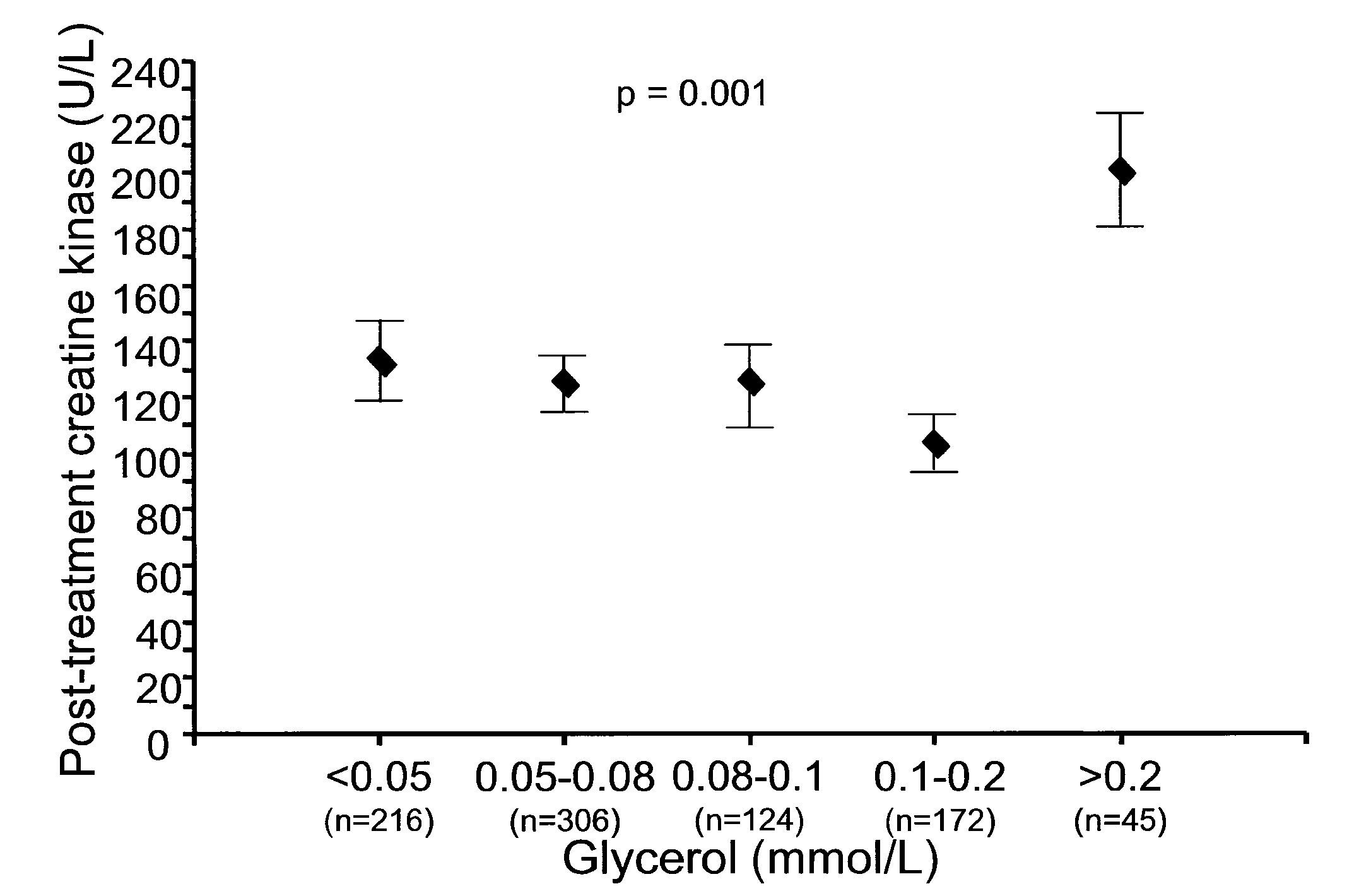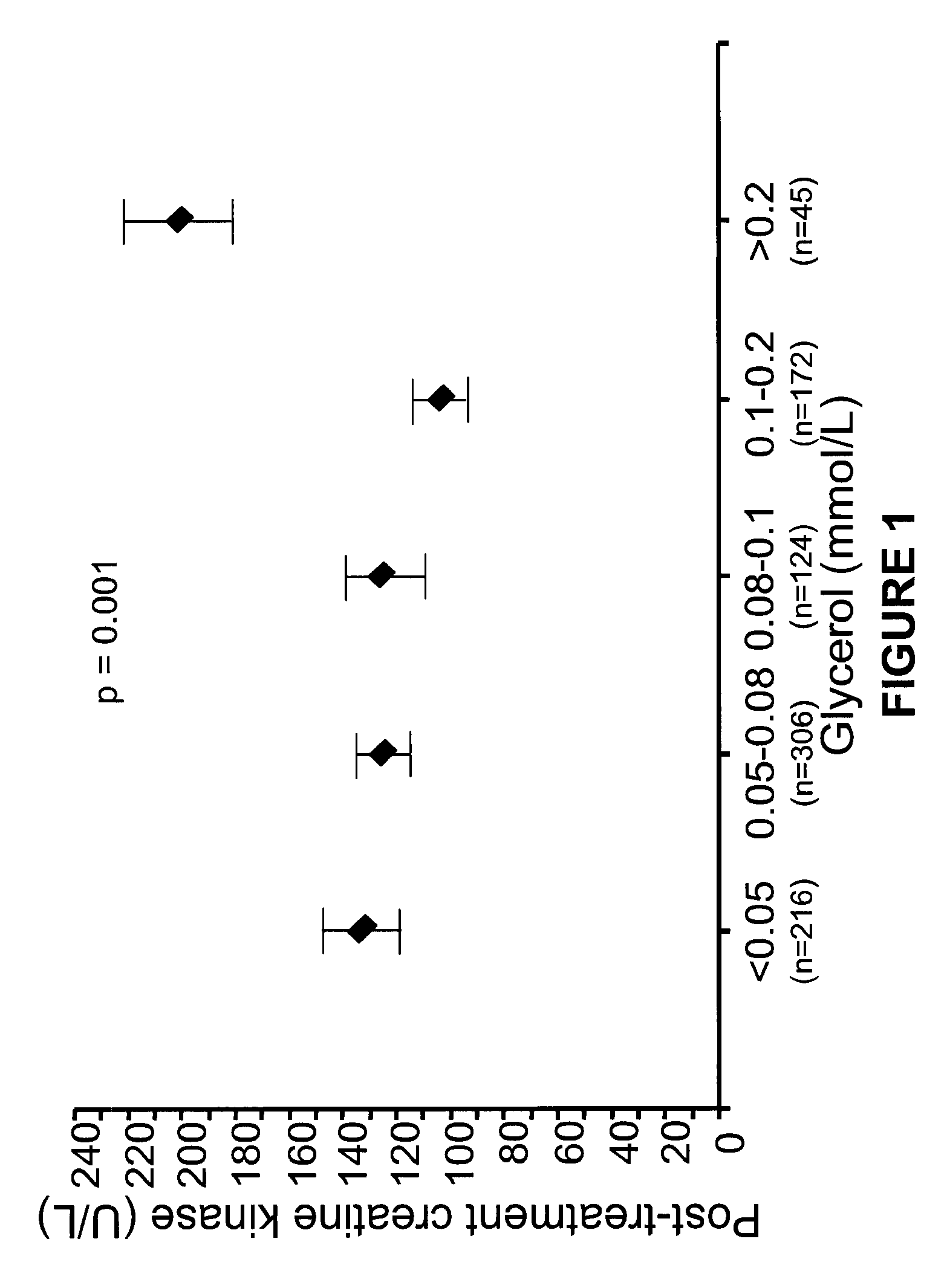Methods for predicting and detecting intolerance to an hypolipidemic agent
a hypolipidemic agent and detection method technology, applied in the field of hypolipidemic diseases and disorders, can solve the problems of many side effects that are related, and no one has ever suggested a correlation between the plasma composition and the side effects, so as to reduce the risk of intolerance to hypolipidemic agents
- Summary
- Abstract
- Description
- Claims
- Application Information
AI Technical Summary
Benefits of technology
Problems solved by technology
Method used
Image
Examples
example 1
Method of Detection of Statin Intolerance Using Glycerol as a Biomarker
[0108]As demonstrated in the present example, the inventors have established a connection between glycerolemia and muscle intolerance to statins among hypercholesterolemic subjects. At high levels, glycerol becomes a biomarker of intolerance to statins. The inventors have also determined a threshold value for glycerol levels: glycerol levels above that threshold value are considered abnormal and indicative of intolerance to statins.
[0109]Method
[0110]Subjects and Clinical Data
[0111]The study included 439 French-Canadian subjects from the Saguenay-Lac-Saint-Jean region (Quebec, Canada) who were treated with statins in order to reduce there cholesterol level.
[0112]The statins were administered alone or in combination with fibrates, bile-acid sequestrants, nicotinic acid or EZETIMIBE™, an inhibitor of cholesterol absorption.
[0113]During the treatment phase with one or more statins, all patients have received dietary ...
example 2
Statin Intolerance Detection Method Using HDL-Triglycerides Levels and Hepatic Lipase Gene Variant as Biomarkers
[0125]This study was carried out to determine the relationship between the composition HDL particles and the expression of side effects in patients receiving a treatment with statins. Multivaried analyses were made to evaluate the association between the cholesterol and triglyceride content of the HDLs and known markers of statin intolerance (muscular and non-muscular side effects, plasma concentration of creatine kinase (CPK), myoglobinuria). Some frequent candidate gene variants were also studied.
[0126]Method
[0127]Subjects and Clinical Data
[0128]This study included 670 French Canadian subjects (425 men and 245 women), natives of the Saguenay-Lac-Saint-Jean region (Quebec, Canada), who had been treated with different dosages of statins in order to reduce their cholesterol level. Statins were administered alone or in combination with fibrates, bile-acid sequestering agents...
PUM
| Property | Measurement | Unit |
|---|---|---|
| concentration | aaaaa | aaaaa |
| resistance | aaaaa | aaaaa |
| concentrations | aaaaa | aaaaa |
Abstract
Description
Claims
Application Information
 Login to View More
Login to View More - R&D
- Intellectual Property
- Life Sciences
- Materials
- Tech Scout
- Unparalleled Data Quality
- Higher Quality Content
- 60% Fewer Hallucinations
Browse by: Latest US Patents, China's latest patents, Technical Efficacy Thesaurus, Application Domain, Technology Topic, Popular Technical Reports.
© 2025 PatSnap. All rights reserved.Legal|Privacy policy|Modern Slavery Act Transparency Statement|Sitemap|About US| Contact US: help@patsnap.com



